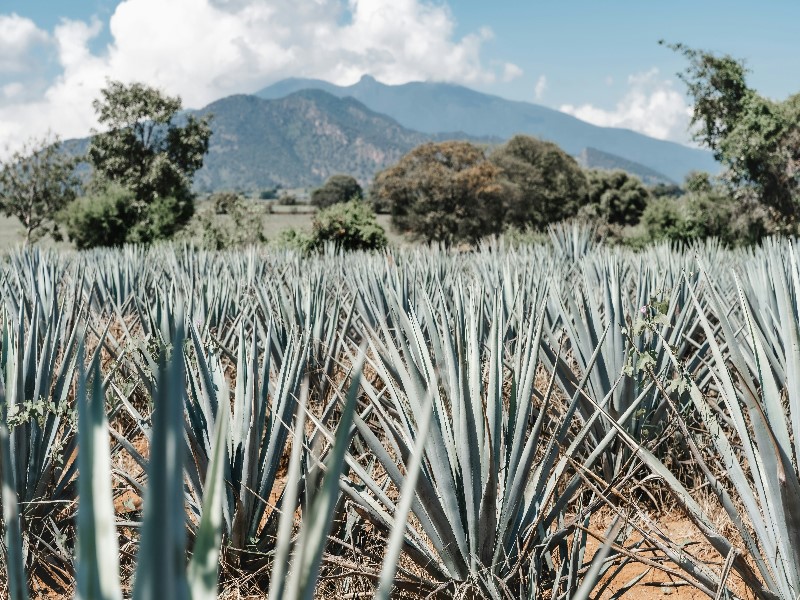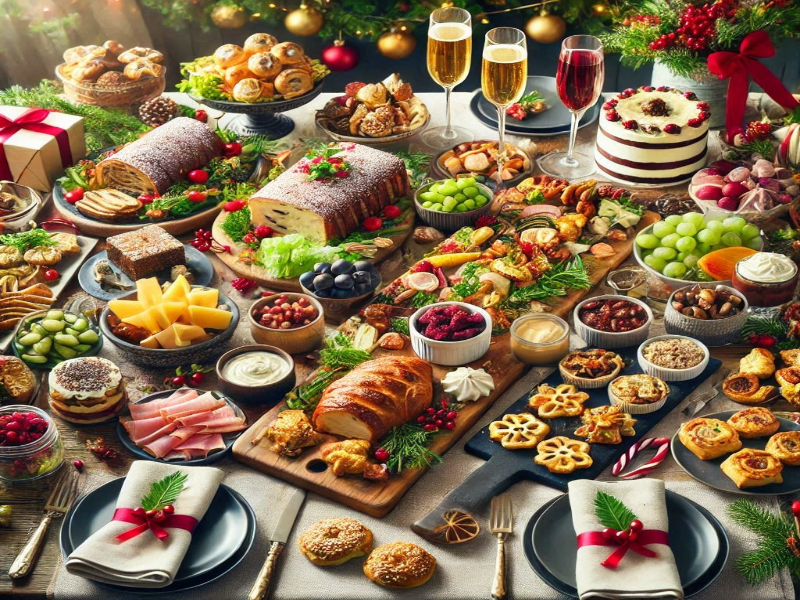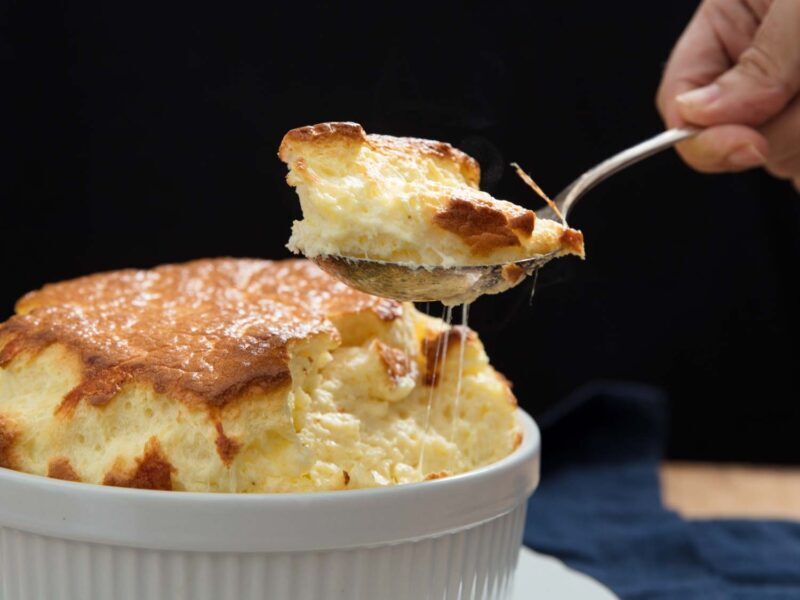
Soufflés
In the fabulous classic movie “Sabrina,” Audrey Hepburn, a chauffer’s daughter, is sent to France to learn to be a cook. One of my favorite scenes is when the class makes soufflés.
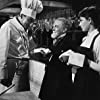
As the chef critiques the finished products, all are failures except for Baron St. Fontanel’s. Poor Sabrina. Hers didn’t rise at all – she forgot to turn on the oven – as the Baron gently told her.
That scene kind of sums up how we think about soufflés. Will it turn out sloppy, too pale, too heavy, too low, too high? I’d classify my initial soufflé adventures as uneven results. However, once I figured out a soufflé is maybe one of the original forms of molecular gastronomy and understanding the unique physical and chemical properties of eggs, my results rival the fictional Baron St. Fontanel’s. Turns out, science makes or breaks success. The secret is the ability of beaten egg whites to expand as gases and steam to inflate tiny air bubbles larger and larger.
The first record of a soufflé recipe is the early 1700s by French cook Vincent de la Chappelle, who among other European dignitaries, cooked for Madame de Pompadour, mistress of Louis XV.
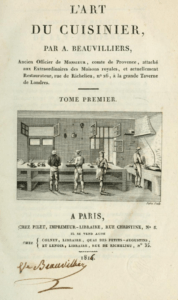 In 1814, Antoine B. Beauvilliers, considered the most important early restaurateur as “he was the first to have an elegant dining room, handsome well-trained waiters, a fine cellar and a superior kitchen” at his La Grande Taverne de Londres on the Rue de Richelieu, wrote the cookbook, “L’art du Cuisinier.”
In 1814, Antoine B. Beauvilliers, considered the most important early restaurateur as “he was the first to have an elegant dining room, handsome well-trained waiters, a fine cellar and a superior kitchen” at his La Grande Taverne de Londres on the Rue de Richelieu, wrote the cookbook, “L’art du Cuisinier.”
His soufflé recipe: “Put in the size of an egg of good butter, a little nutmeg and the yolks of four fresh eggs, the white of which must be whipped apart as for biscuit; mix them by little and little into the puree though hot, mix all well, and pour it into a silver dish or paper mould, put it in the oven. When the soufflé is well risen, touch it lightly, if it resist a little it is enough; it must be served immediately, as it is apt to fall.”
Savory or sweet, give a soufflé a try! Let me know how it goes. Just remember to turn the oven on.
Wishing you joy in the kitchen,
Michele
Sonoma Soufflé
Recipe: “The Williams-Sonoma Cookbook” by Chuck Williams
½ cup heavy cream
½ cup milk
2 tablespoons unsalted butter
2 tablespoons all-purpose flour
4 large egg yolks
1 cup shrimp meat, cooked and finely chopped
½ teaspoon salt
Freshly ground black pepper
Pinch cayenne pepper
1 tablespoon Madeira
1 tablespoon lemon juice
5 large egg whites
1. Preheat oven to 350° F. Make a parchment paper collar that extends 2 inches above the outside rim of a 1 ½-quart soufflé dish. Secure it with a pin, paper clip or tie with string. Don’t butter dish.
2. In a saucepan, combine cream and milk. Heat and set aside. In a separate saucepan, melt butter over moderate heat and stir in flour. Cook for 2 minutes, stirring vigorously with a wooden spoon or whisk. Add cream and milk mixture and cook, while stirring, over low heat until smooth and thick, about 2-3 minutes. Remove from heat and let cool 5 minutes.
3. Beat egg yolks lightly and stir in a little of the sauce, then combine with remaining sauce. Stir in shrimp and season with salt, pepper, cayenne, Madeira and lemon juice.
4. Beat egg whites to soft peaks and stir a quarter of them into the sauce. Fold sauce gently into remaining egg whites. Pour into prepared soufflé dish and bake for 35 minutes, until just done in the center and lightly browned. Carefully remove collar and serve at once.
Chuck’s notes: When I was living in Sonoma, I made a great many soufflés. It was considered quite a feat back then, though now many home cooks have their own secrets for a perfect soufflé. In this recipe I’ve used 1 cup of shrimp meat, but you may substitute crabmeat or chopped cooked chicken. In fact, I add all kinds of things, depending on what’s in the kitchen when the mood hits. By the way, Madeira is important. The alcohol vaporizes and helps the soufflé rise without fail. It also leaves behind a wonderful flavor.
The best way to beat egg whites for a soufflé is with a balloon whisk and in an unlined copper bowl. Due to a harmless chemical interaction (egg whites adhere to copper, so more air can be beaten in), you’ll get up to a third more volume and therefore a higher soufflé.
The whites should be beaten to soft peaks. The way to tell if you’ve achieved this is to lift the whisk straight out of the bowl and invert. The peaks on the whisk should remain standing upright, with just a slight bend at the tips. If the whites are too soft they won’t hold the soufflé up; if too stiff you won’t be able to combine them with the sauce. Soft peaks blend right in.
Photo credit: Vicky Wasik


